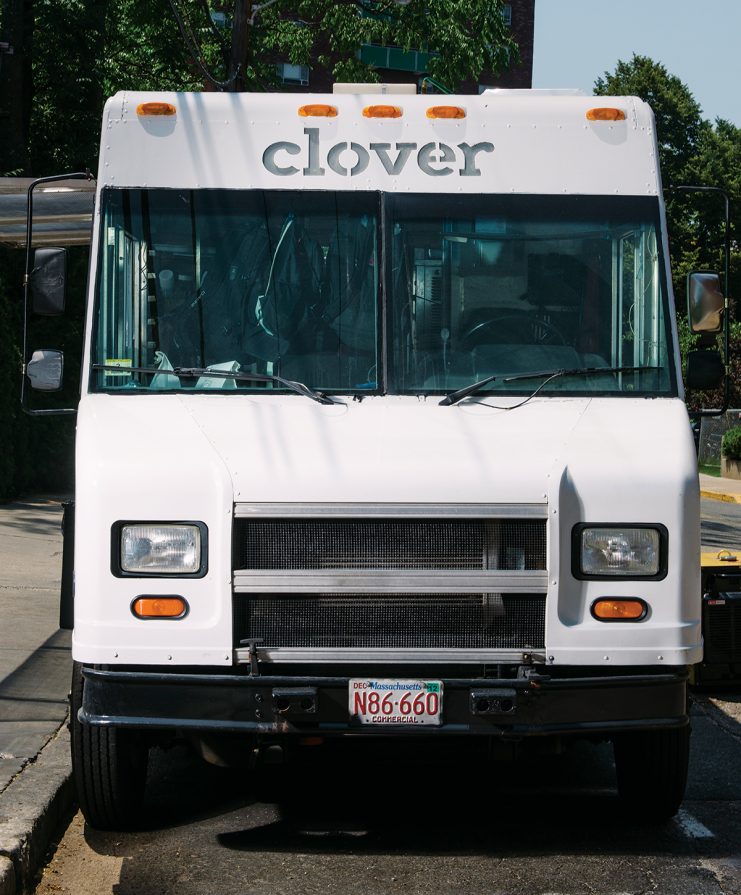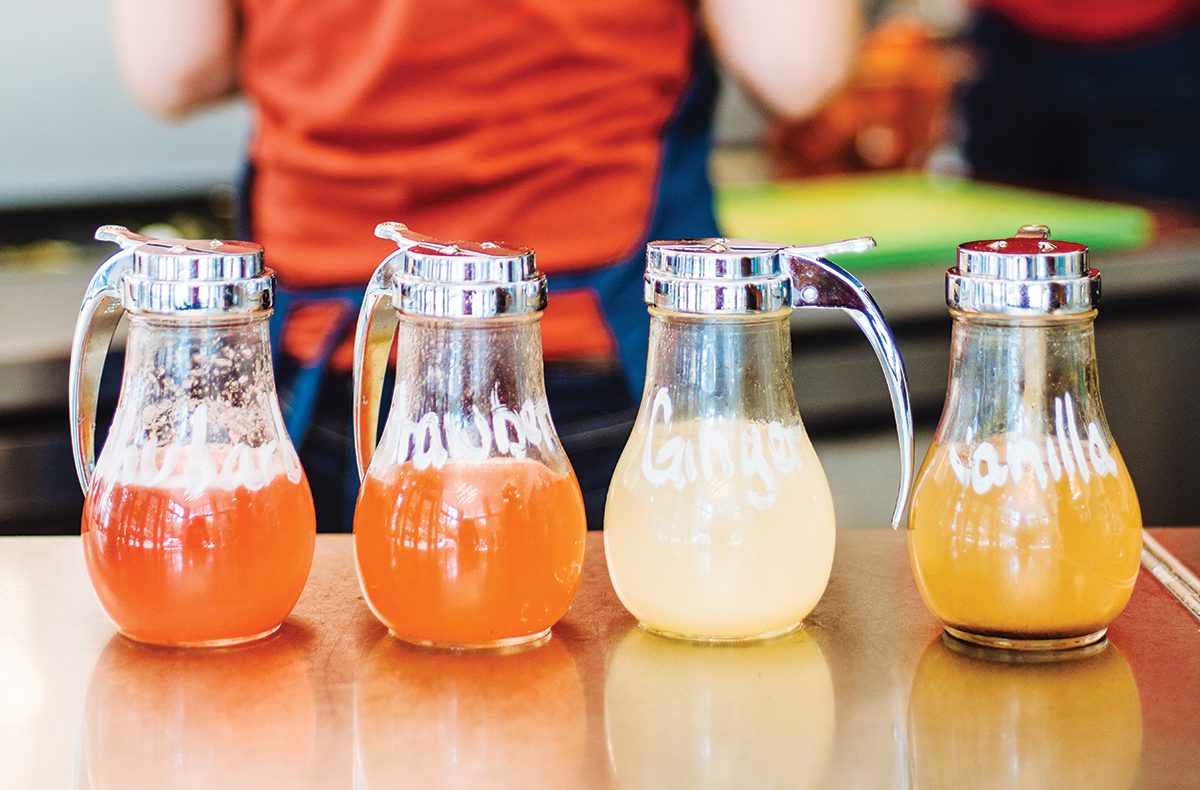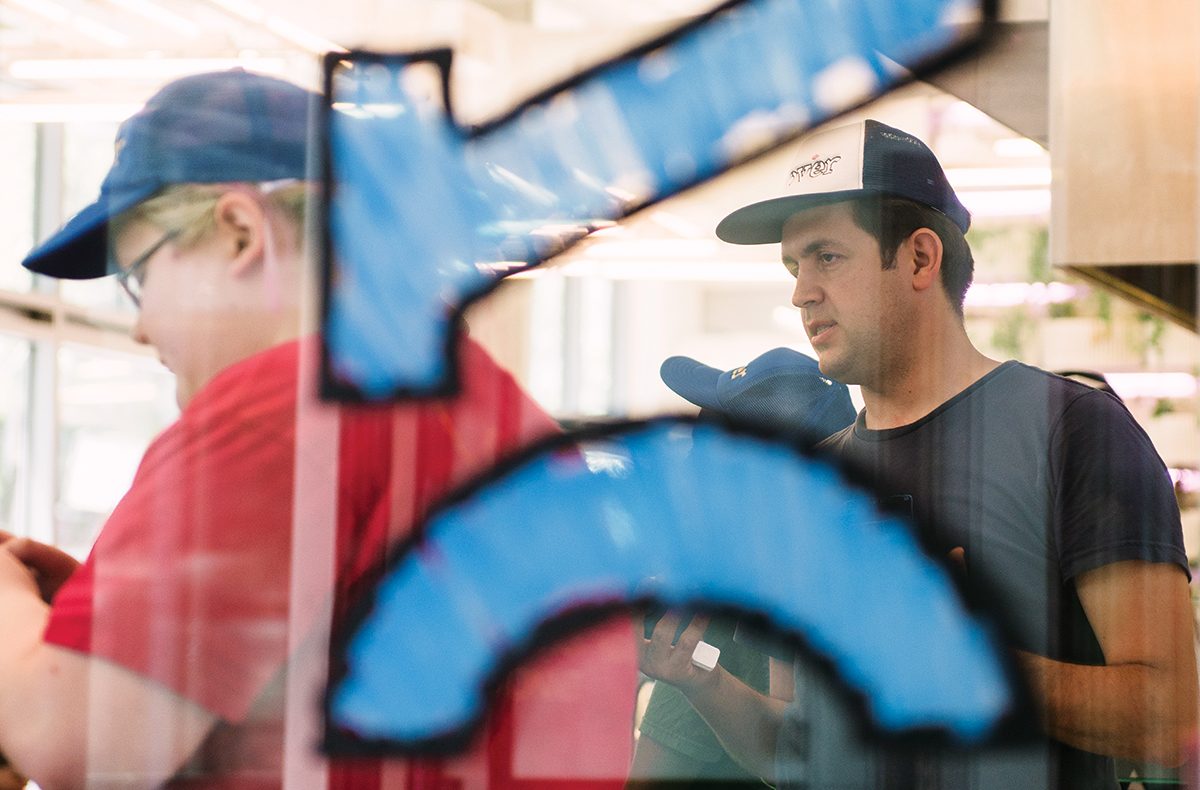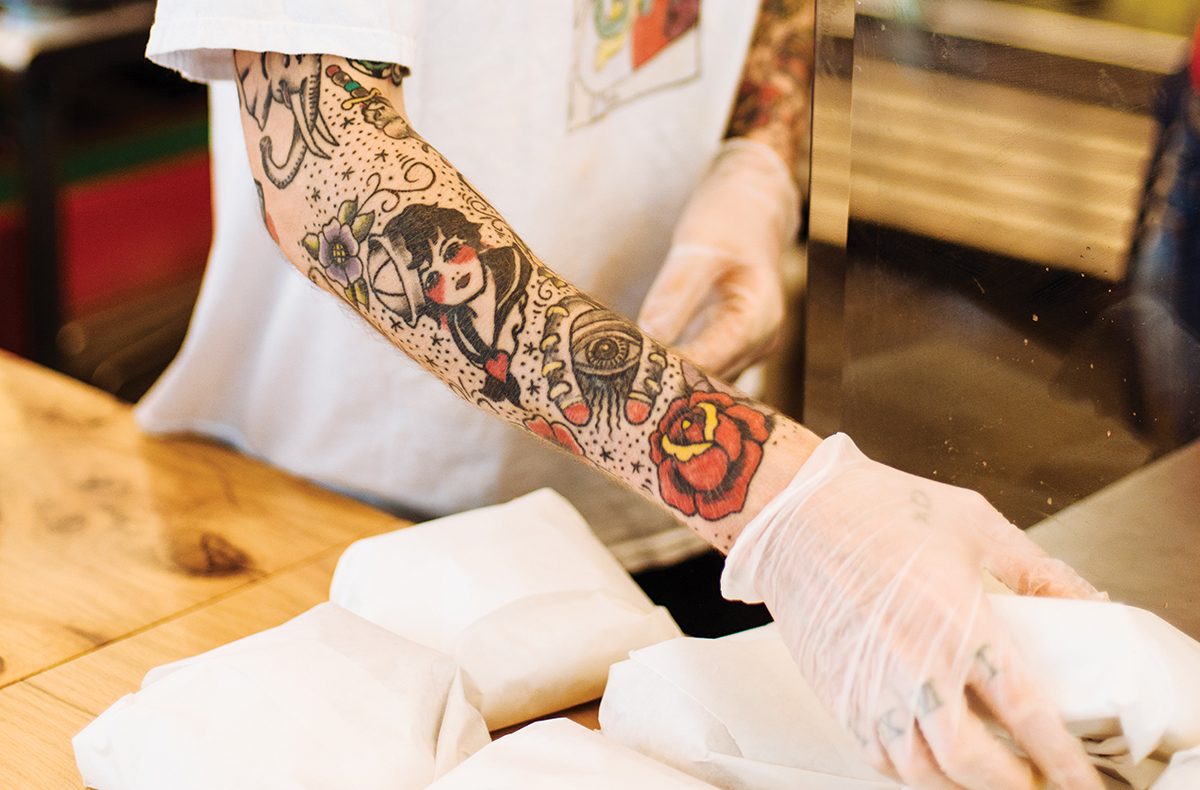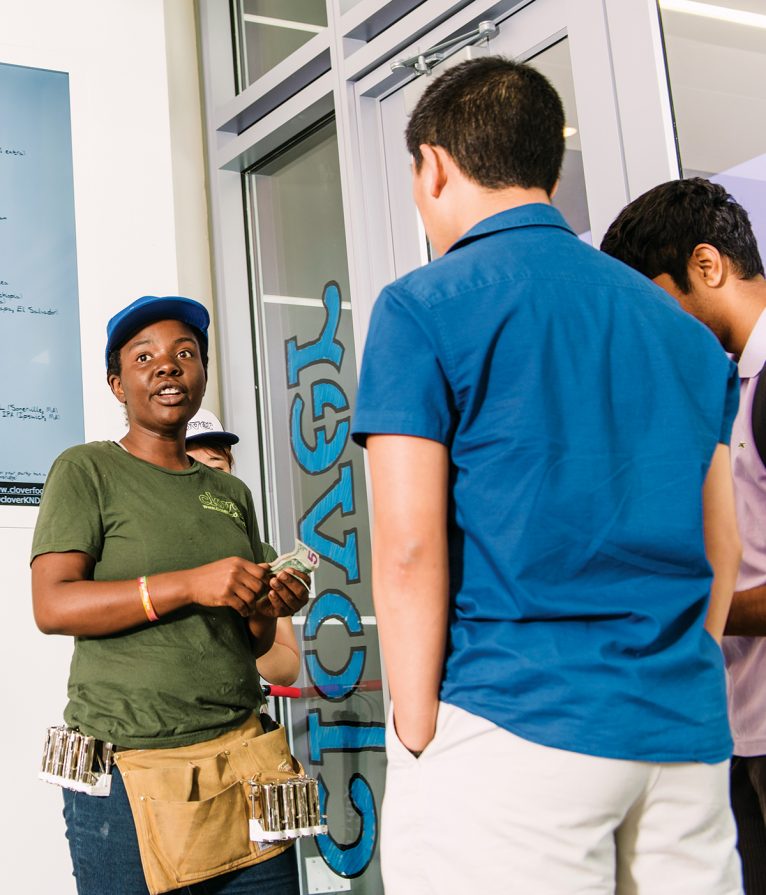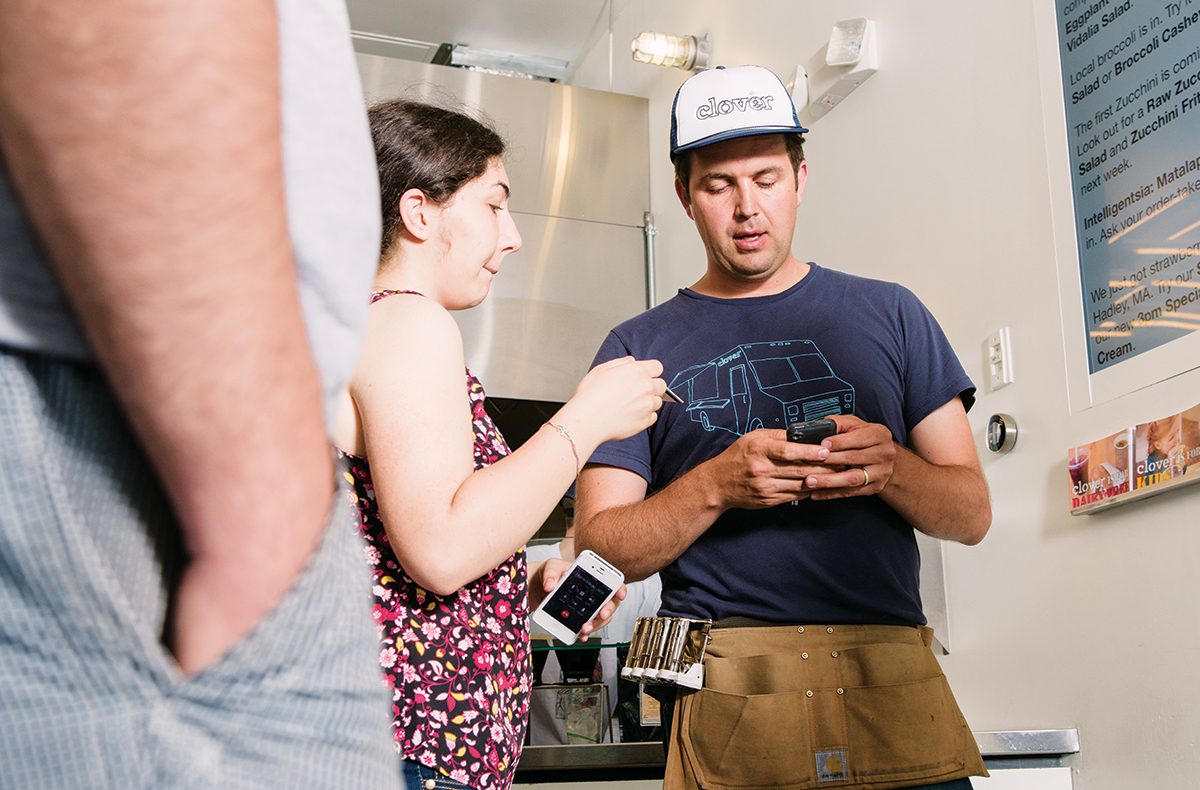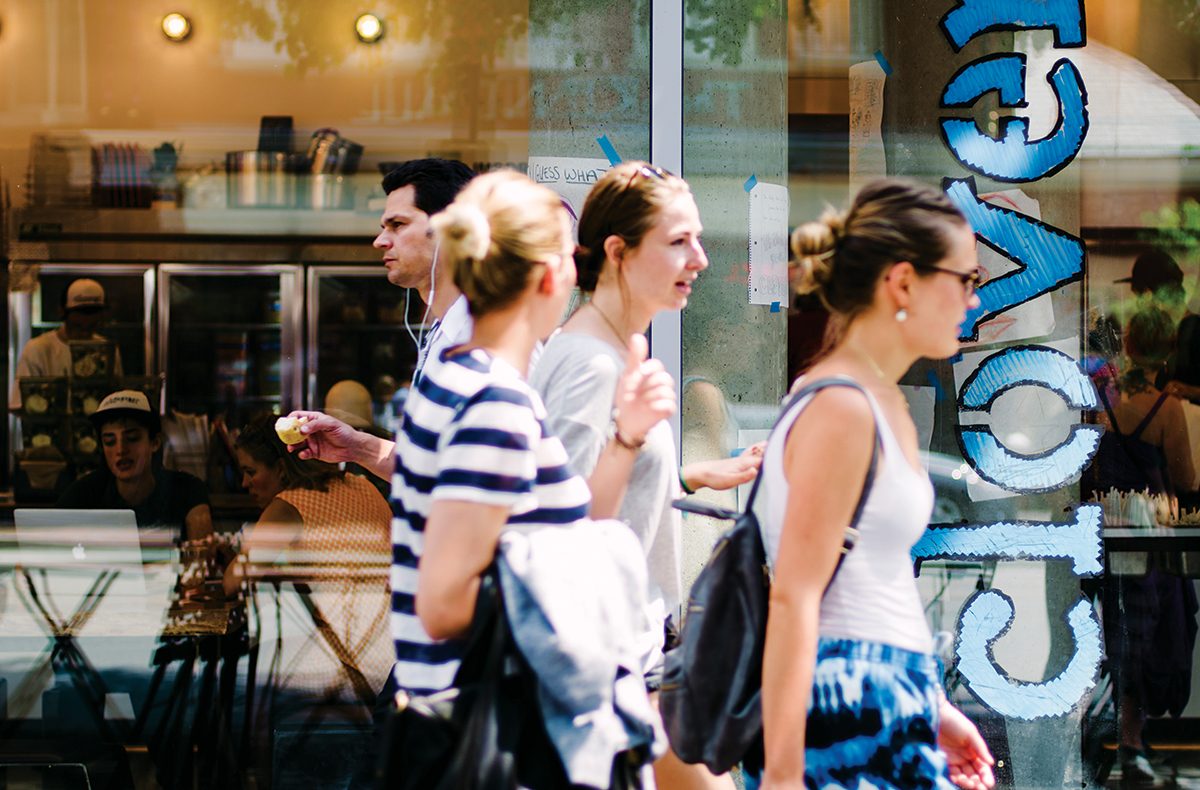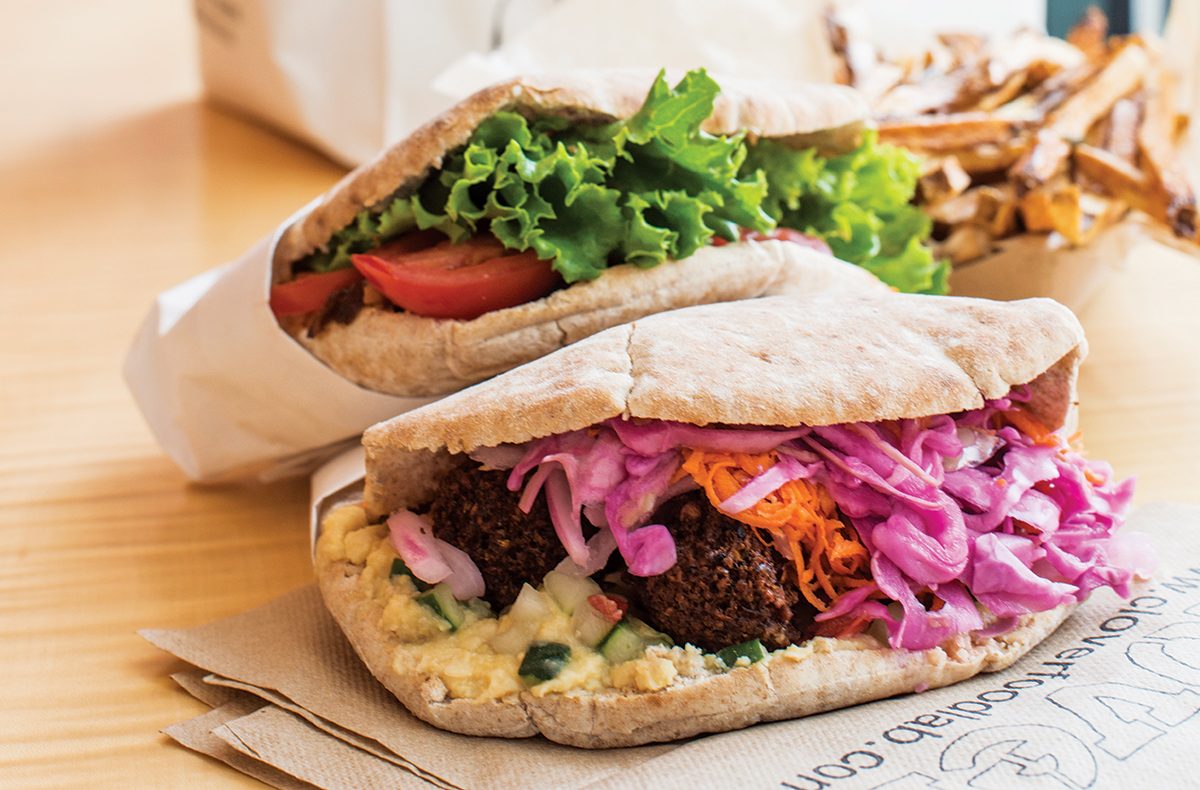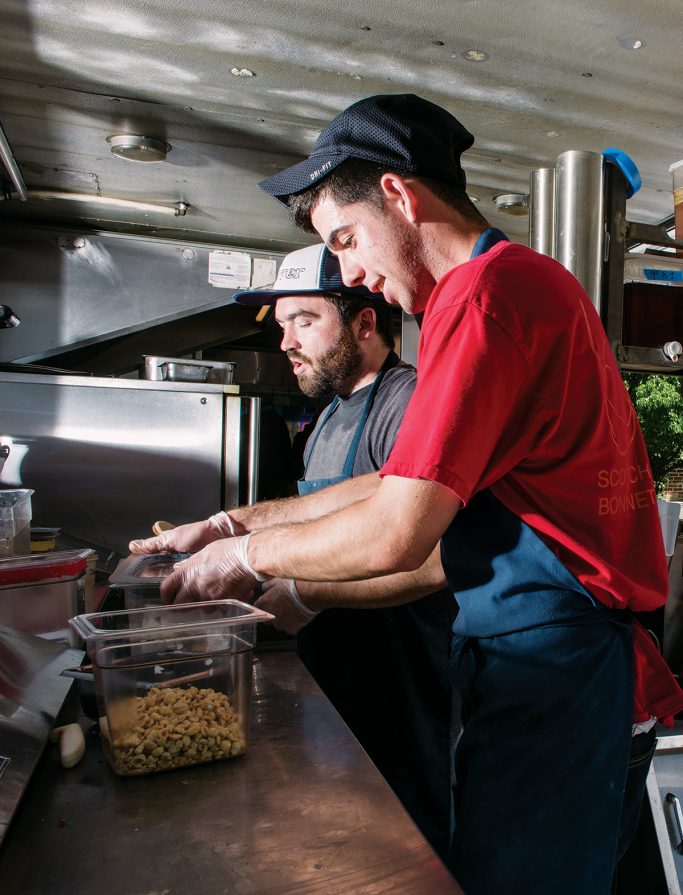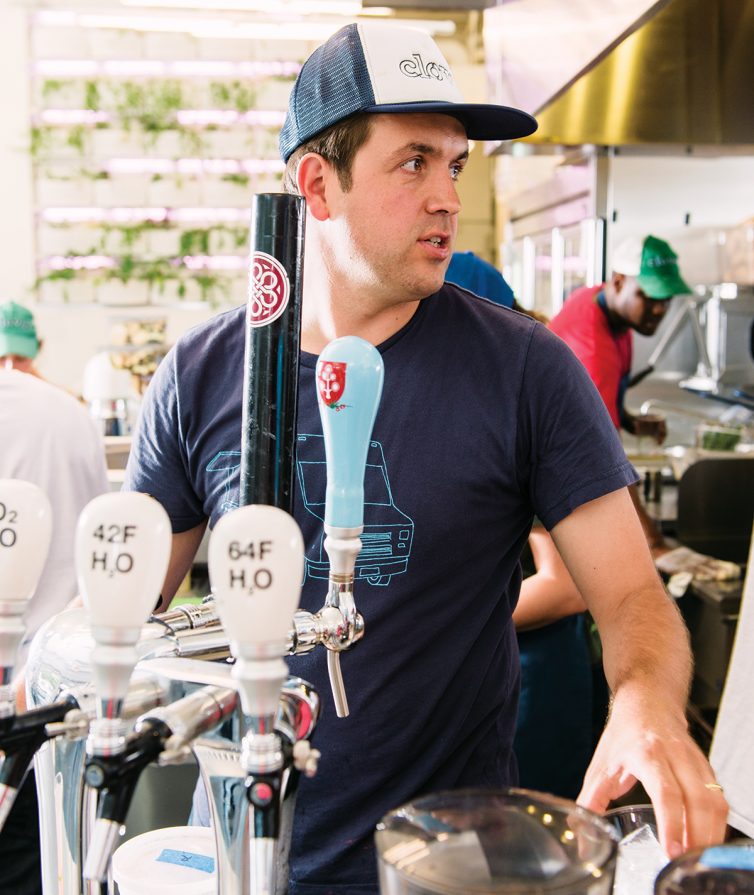The Making of a McTopia: Ayr Muir and Clover Food Lab
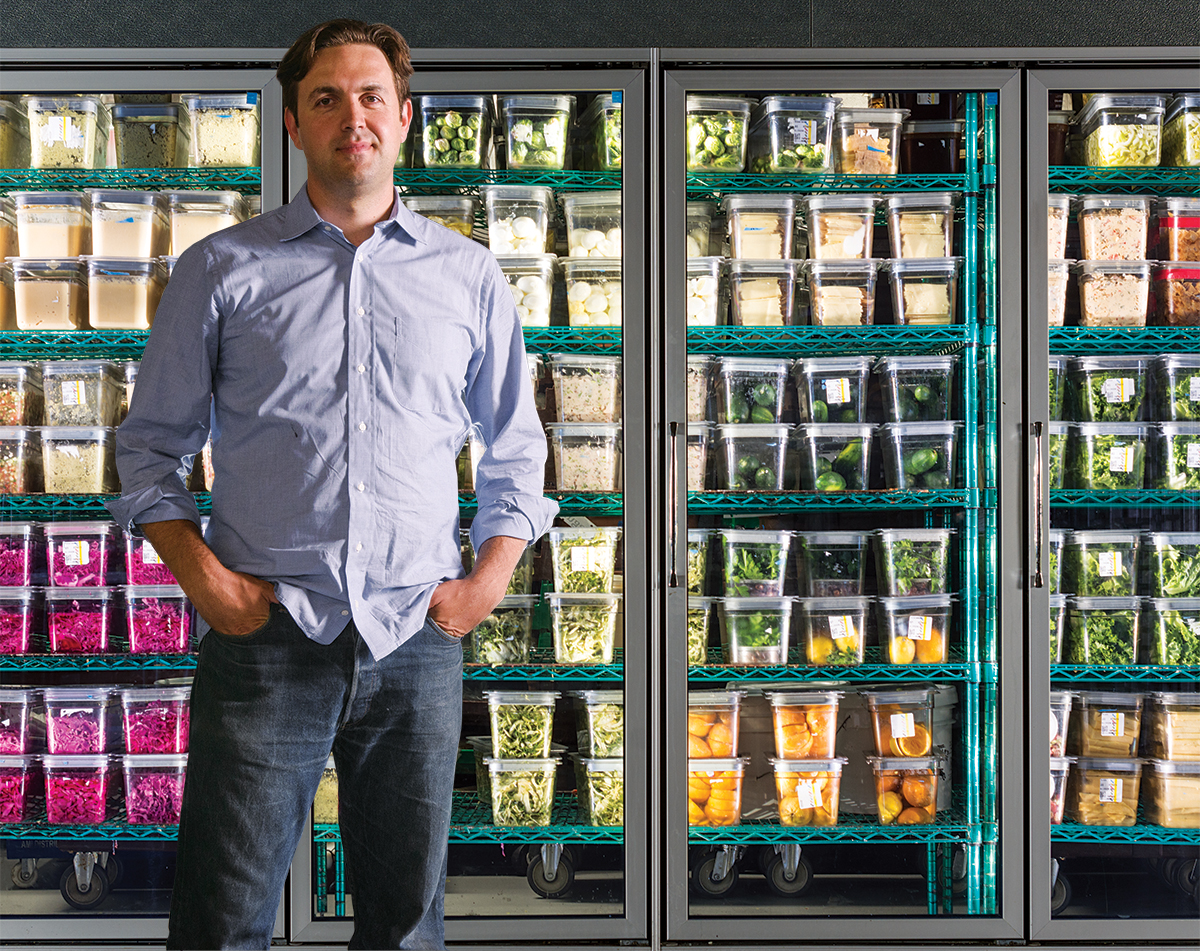
Photograph by Mark Fleming
Ayr Muir is hungry, and in a hurry.
It’s barely noon on an overcast June day in Washington, DC, and as he ducks into Chipotle’s new concept chain, ShopHouse Southeast Asian Kitchen, Muir whips out his iPhone and starts its stopwatch. The seconds tick by as he counts the heads of the customers ahead of him in line: 17. When he picks up his rice bowl from the counter, he stops the timer—nine minutes, 30 seconds—then does some quick math out loud. ShopHouse is serving two customers per minute, he says, and their average meal ticket is $11—so Muir figures they’re taking in around $1,000 per hour.
A satisfied look settles on his boyish face: He’s winning. Muir knows that Clover Food Lab—his quick-growing, data-driven, Cambridge-based fast-food startup—can process six customers per minute, three times as many as this place. And he’s just getting going. Over the course of the day, stopwatch in hand, Muir will consume a taco from a truck, four bites of a salad at Chop’t, a bowl of ramen noodles, at least three pour-over coffees, a slice of dessert pizza, a half-dozen plates of Asian tapas, a gin cocktail, and several glasses of rare wine at Doi Moi. All the while he’s closing deals, scouting locations, and—most important—measuring himself against the competition.
He has been doing this for years, since before he launched Clover’s first food truck back in 2008. Clover is up to six trucks now, plus five brick-and-mortar restaurant locations. A sixth restaurant will soon open in Central Square, and the first of several DC locations is scheduled to debut in the fall. A new partnership with Whole Foods rolls out this month, in which “Clover to Share” coolers will be installed in six supermarkets across Massachusetts. Muir envisions an asymmetrical nationwide chain, in which you can get Clover’s fresh, local, and seasonal food at a truck, a restaurant, a supermarket, or a kiosk.
Armed with an extraordinary business plan and a cryptic motto—“Everything Will Be Different Tomorrow”—Clover has been growing at a feverish pace. When he opened his first restaurant, Muir scrawled a manifesto on the wall in black paint: “This is a prototype,” he wrote in bold letters. “We will screw something up. We’ll screw many things up. Tell us when that happens.” This philosophy is all part of an elaborate feedback loop that Muir has designed to engage his patrons with his staff, and with one another. Sometimes, customers complain that there’s no salt on the tables. That’s by design—partly because Muir doesn’t think it’s healthy, and also because, if enough customers ask for salt, it’s a sign that his recipe needs tweaking. “I like the friction of it,” he explains.
Muir tracks his customers’ behavior relentlessly, both in his restaurants and on social media. He monitors every Yelp review, tweet, and Facebook mention; sends out surveys; and crunches the data: On any given day, 10 to 20 percent of Muir’s customers are new faces. If you eat at Clover once, you’re highly likely to come back within a month. Once you’re in, you’re hooked: Twenty percent of the chain’s customers eat at Clover an astounding six times per week. Muir likes to tell the story of one Clover fan who offered to stand outside the building and tell passersby that his insulin levels dropped after he began eating Clover meals three times a day. Clover’s patrons skew young and highly educated, and if you are one of them, there’s a 40 percent chance you’ve told 10 or more people about the chain. (This is essential to Clover’s model, since Muir refuses to advertise.) Muir also knows that if you’re sitting in his restaurant, there’s a 60 percent chance you’ll be having a conversation about food. Most people who eat at Clover live or work within a five- minute walk of the chain’s locations, and Muir says his customers report in surveys that having a Clover nearby dramatically increases their daily happiness. “It sounds weird but it’s true,” he says, nodding in a way that makes the statement seem self-evident. “Adding Clover can make people happier, and taking it away can make them less happy.”
The only thing bigger than Clover’s buzz is Muir’s ambition. “We want thousands and thousands of restaurants,” he says, and he expects Clover to one day be “more profitable than Chipotle and bigger than McDonald’s.” He may have only a dozen locations, but Muir seems to be the right person with the right idea at the right place at the right time: Food startups are suddenly hot investments, raising tens of millions in venture capital. “He’s got the mind of an engineer, the heart of a social entrepreneur, and the personality of an artist,” says Dan Heath, the bestselling coauthor of the business books Decisive, Switch, and Made to Stick and a friend of Muir’s from Harvard Business School (he was one of Clover’s first investors). “I think of Ayr as sort of the Steve Jobs of food.”
That’s a good analogy, except for one thing: Ayr’s ambitions are much, much bigger.
Muir, an MIT-trained engineer, doesn’t just want to make a ton of money in the fast-food business, or even just create a lifestyle brand. To him, Clover is a grand experiment in changing humanity’s most destructive habits—and, just maybe, a way of saving the planet.
Muir is tall, and has a calm, thoughtful demeanor. He doesn’t engage in the startup-speak prone to entrepreneurs, though he does have some of their trappings: He drives a Mini Cooper, carries a Filson bag, does yoga three or four times a week, and rides a BMW motorcycle. He can seem a bit aloof at times, and in some ways, so can Clover Food Lab.
The aesthetic is laboratory chic: sleek verging on sterile. The design of both the trucks and the restaurants, by the local architecture firm Single Speed Design, allows natural light to filter in, with massive windows built into the trucks and floor-to-ceiling glass in the restaurants, like an Apple Store. All-white walls are decorated with crayon sketches patrons have made on the reams of butcher-block paper used as place mats. Flat-screen monitors display the real-time availability of each menu item in a font based on Muir’s handwriting.
On a busy Tuesday morning this spring, Muir stands on a wooden bench in the center of his Harvard Square restaurant—his first brick-and-mortar eatery and the site of Clover “world headquarters,” according to the sign on his office door. He’s in a T-shirt, jeans, and white Converse high-tops, and his light brown hair flops forward like a skater boy’s as he snaps photographs of a “Clover to Share” cooler, a test run for the company’s takeout partnership with Whole Foods.
Around him, customers filter in; some of them look disoriented. At Clover, there are no cash registers, no photos of menu items, and no queue to speak of. When you’re ready to order your chickpea fritter sandwich, leek-and-cheddar-stuffed popover, or cinnamon-spiked lemonade, you just walk up to the order taker, Azeb Zegeye, a young woman in a Clover trucker’s hat, standing in the center of the room. With each encounter, Zegeye engages in Clover’s routine call and response: “Have you eaten here before? Well, welcome back. Have you tried our lemonade? Here, have a sample.” Her patter doesn’t sound scripted, but it’s designed to aggregate specific information for later analysis. She enters all answers into an iPod Touch app built by Muir—another way of monitoring and studying his customers’ habits. You can watch your sandwiches being prepared behind a low silver counter. The kitchen staffers wrap them in paper, in keeping with Muir’s commitment to a zero-waste, all-compost restaurant. And when you’re handed your food—there are no trays—you can eat at one of the restaurant’s long, communal wooden tables.
One thing you’ll never hear Zegeye say is the word “vegetarian.” Clover doesn’t serve meat, yet Muir’s 200 employees are specifically instructed not to use the V-word, and have been hired, in part, on the basis of their appearance: They can’t fit the “wimpy, meek, weak associations people have” with vegetarians, Muir says.
It’s a strategy that plays on our subconscious: Developmental psychologists have found that if we’re told something is healthy, we’ll find it less delicious. Shortly after he opened his first truck, Muir served Evelyn Kimber, the president of the Boston Vegetarian Society. “I asked him why they don’t identify as vegetarian,” Kimber recalls, “and he told me they want to present the food as good food.” Muir was more blunt in an early interview with MIT Technology Review. The reason Clover doesn’t call itself vegetarian, he told the magazine, is “because no one will eat it if we do.”
It’s the central paradox of Muir’s vision: The transformative power of Clover lies in its menu being entirely meat-free—yet Muir believes the success of the chain hinges on keeping that distinction very, very quiet. His favorite stat is that only 10 percent of Clover’s customers identify themselves as vegetarians.
Not only does Muir avoid using the words “vegetarian” and “organic” when describing his food, he also avoids vegetarian staples like eggplant Parmesan and grilled zucchini. Muir regards those dishes as cop-outs. “A portobello [sandwich] is just an easy way out,” says Enzo Pileggi, a former chef at the Four Seasons who manages Clover’s Kendall Square location. “We want people to say, ‘Wow.’”
Ed Doyle, the president of the Cambridge-based RealFood Consulting, who works with local restaurants such as Bondir, Flour Bakery + Café, and Craigie on Main, thinks Clover’s strategy is smart, as vegan and vegetarian restaurants often come off as too earnest. “It’s not all Birkenstocks and patchouli,” he says. “It’s food made out of vegetables…. We always preach to our clients not to exclude people. You want to tap into that greater market and create converts.”
But others in the industry find Clover’s message coy and off-putting—even while they admit to enjoying the food. “There’s a kind of evasiveness in their refusal to say they’re a vegetarian restaurant,” says Gus Rancatore, the founder and owner of Toscanini’s ice cream shop, in Cambridge. “I get that you don’t want to scare away customers or potential customers. But it’s a little like a liberal who [says they are] not a liberal. For God’s sake just say it, it’s not a bad word.”
Muir was raised in Bernardston, Massachusetts, a rural town on the Vermont border, in a house his parents built. The family bought most of its food at the local co-op. “Every morning he would wake up to the sound of his father grinding porridge. That’s how instant his food was,” his mother, Rebecca Muir-Harmony, jokes. The Muir-Harmony family is from the same Scottish clan as the environmentalist John Muir. His sister Teasel says their parents instilled in them a sense that they should make the “world a better place.”
